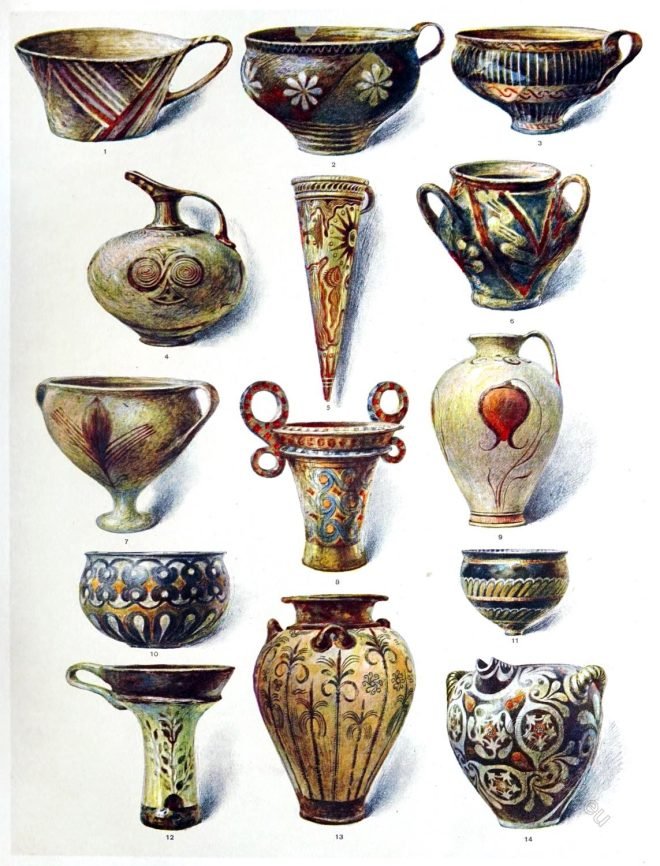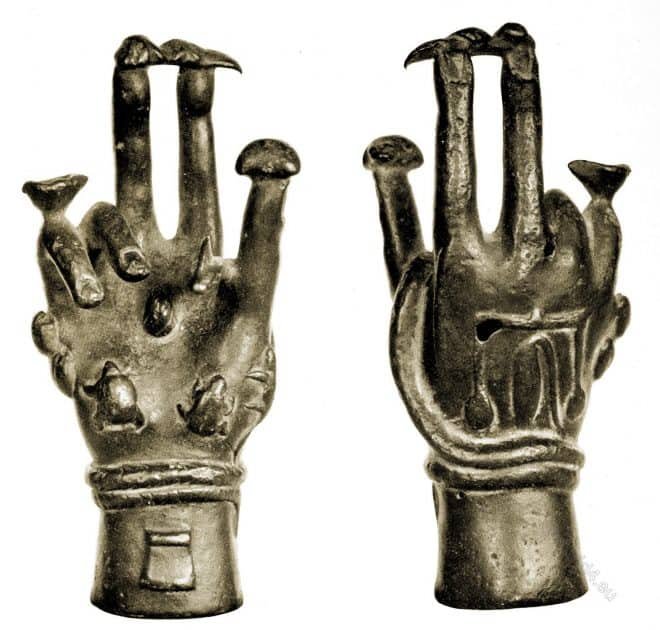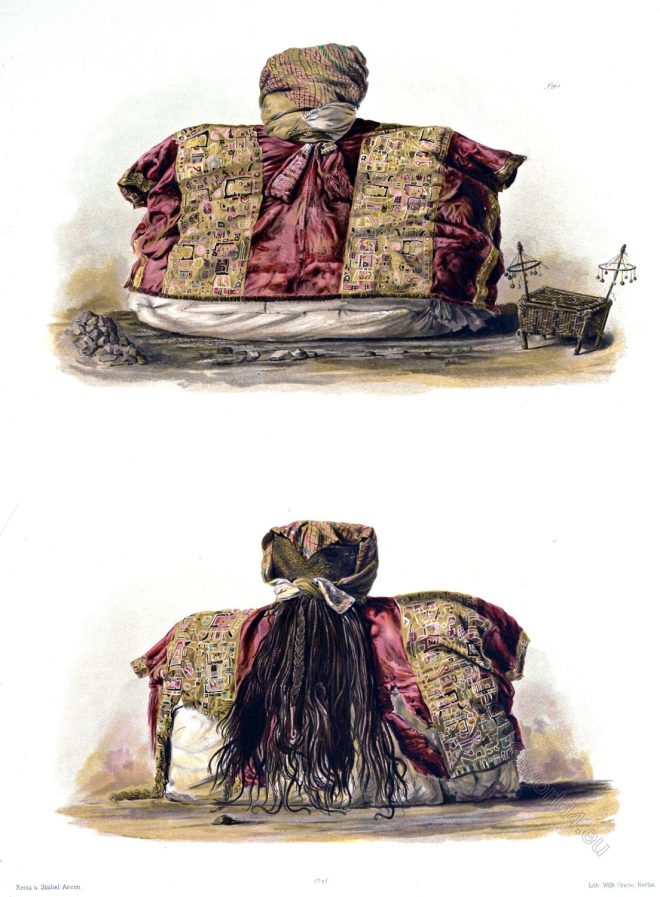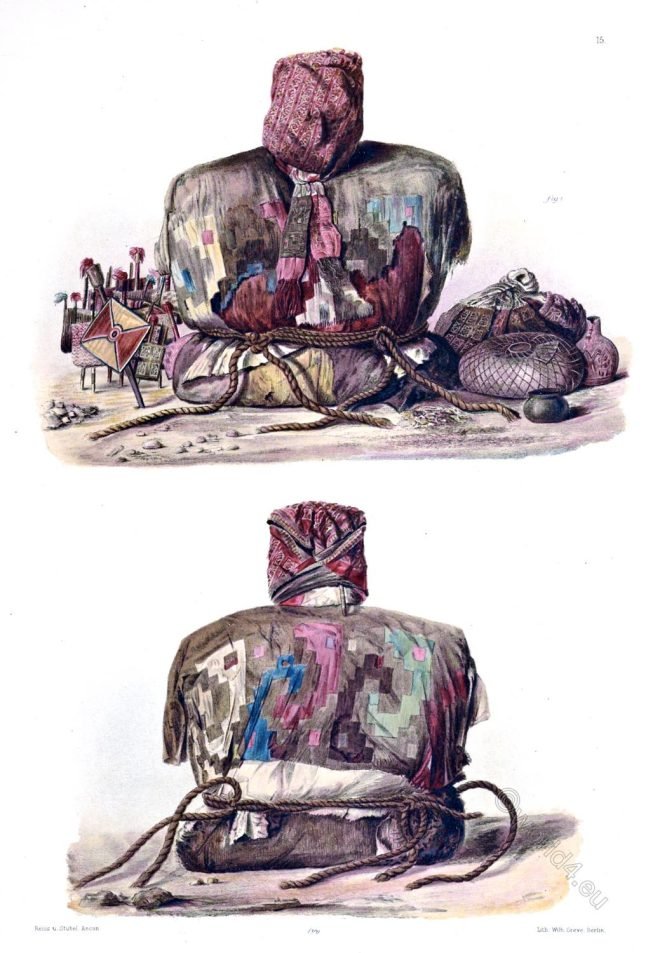The great love of the Saxons for display in dress and ornament led to a very, remarkable development of artistic skill in fashioning and decorating articles of jewelry, which were worn by men in greater profusion than by women.
Tag: Ancient crafts
Earthenware from Crete and Greece. Middle and Late Minoan.
CRETE AND GREECE. Middle and Late Minoan circa 2000—1200 B.C. Vessels from Cnossus, Mochlos, Korakou, Palaikastro, Melos.
A magic hand used as an amulet for averting the evil eye.
The Roman magic hand itself was considered a potent means of averting the evil eye.
Rome. Furniture and Appliances of Antiquity. Pompeii, Herculanean.
Marble Curulian armchair, Bedstead, Iron suitcase, Terracotta casting vessel, Four-legged table.
Ancient specimens of Roman and Grecian Glass. Antiquities & Works of Art.
Antiquities and Works of Art. Ancient specimens of Roman and Grecian Mosaic Glass. Amphora, Cruche, or Œnochœ, small Bottle, ribbed Cup.
Anglo Saxon ornaments. Fibula, Pendant, Pin and Buckle.
Fibula of gold and bronze. Pendant or bulla of gold. Pin and Buckle of of bronze. Discovered at Wingham, near Canterbury, in 1843.
Hunting scene of Sassanian Fabrics of the Middle Ages.
During the reign of the Sassanids, who ruled the Neo-Persian Empire from 250-650 AD and were distinguished by their love of luxury, the arts, especially those of weaving, reached a high level of perfection.
The peculiar shape of a richly endowed mummy. Necropolis of Ancon.
Side view and section and the peculiar shape of the richly endowed mummy pack is clearly shown in the present illustration.
Remarkable Sumptuous Mummy Pack from the Necropolis of Ancon, Peru.
The Mummy, the front and back view of which are here figured, is assuredly the most remarkable hitherto discovered in the Ancon Necropolis.
Two Mummies from one Grave. Front and back view. Ancon Peru.
Two Mummies from one Grave. Front and back view of a Mummy with a false head and funeral accompaniments.










